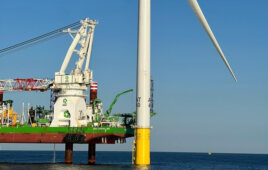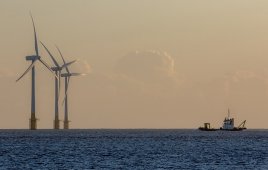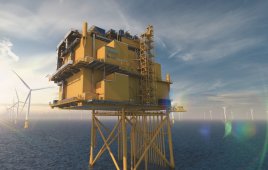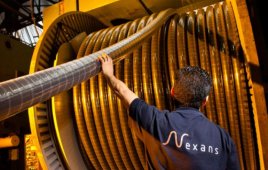Offshore cables must safely and reliably endure harsh marine conditions, and typically over long distances to deliver power onshore. Unlike onshore wind-farm installations, offshore cabling routes are also more difficult to access, let alone install or repair cable effectively. In fact, simply locating a fault can sometimes pose a challenge. Repairs may also take weeks or months, and depend on weather and the availability of equipment and vessels.
So the wind industry is working to reduce O&M and cable failures. Independent energy advisory and certification body, DNV GL, has partnered with offshore researchers and experts such as Deltares, ECN, BREM, and others, in a joint industry project or JIP: “Cables lifetime monitoring.” The aim of this study, according to DNV GL, is to reduce the chance of power cable failures in offshore wind farms.

Power cables typically account for only 5 to 10% of total investment costs of offshore wind farms. However, according to energy advisory DNV GL, the components are the top reason for project downtime. Cable inspections and repairs are also costly maritime operations. DNV GL and partners are collaborating to study and, ultimately, reduce cable failure levels and O&M costs through a joint industry project. Learn more here.
“By preventing a significant number of cable failures caused by damage during manufacturing, installation, and operation, we are convinced that our study will allow us to significantly reduce the levelized cost of electricity of offshore wind,” explained Jan-Joost Schouten, a project manager with Deltares, in a press statement.
The JIP says between mid-2018 and 2020, it will extract and analyze important lessons about the major causes of power-cable failures from previous and current cable-monitoring research. For example, earlier analysis by DNV GL showed that cable failure is partly attributed to manufacturing, design, and installation errors. In addition, morphodynamic processes — changes to the seabed floor from sand waves, for example — can expose subsea cables, increasing their risk of damage.
Key lessons from the study will be compiled into a guidebook with tips for improved design, manufacturing, installation, and operation of submarine cable systems.
What’s new in cables
While the JIP begins its research, manufacturers are also working to improve marine cables for offshore wind farms. Here are a couple of new ideas.
Cable protection
Trelleborg’s Njordguard is an integrated protection system for offshore wind-farm cables in wind-turbine generators and substation platforms. Its API 17L-certified Uraduct material is highly abrasion-resistant and can travel over the seabed floor without damage. NjordGuard has a smooth outer surface to reduce drag and snagging risks.
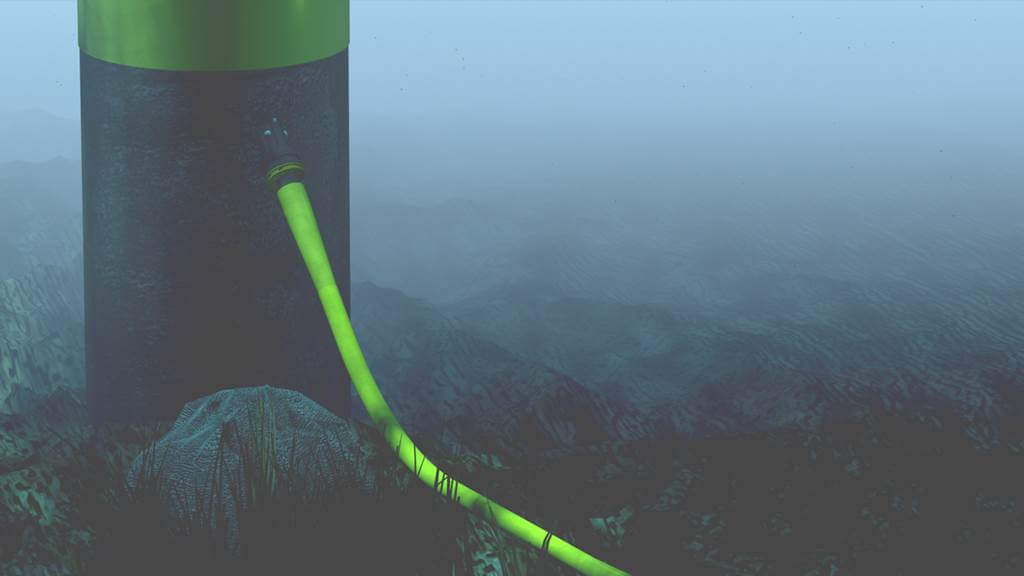
Trelleborg’s NjordGuard is an integrated protection system for offshore wind power cables in turbine generators and offshore substation platforms that fits both monopile and J-tube applications. Trellebrog says the extendable system requires minimal assembly and can be manufactured to meet any diameter cable. Watch a video here.
Most notably, the system improves safety because it installs (and can be removed and reused) without the use of divers or underwater remote-operating vehicles. A tapered pull-and-clamp lets the cable protection be pulled into a monopile entry or J-tube foundation safely and securely.
In addition, the system requires minimal assembly. According to Trelleborg, NjordGuard’s external dual-stiffener coating is factory cast directly onto the connector and its internal stiffener can come pre-assembled. Only its external tail needs to be attached with Trelleborg’s proprietary connection system, which can be done on a cable-lay vessel or pre-installed for later use.
NjordGuard has undergone large-scale wet testing and underwater installation testing with monopole and J-tube.
Cable length
When cable is sent to a new wind site, it typically arrives in lengths ideal for efficient delivery but shorter than required for offshore projects. One idea to reduce offshore wind costs is to lengthen cables. For example, Nexans’ underground single-core 33-kV cables (500 sq.mm) now come in lengths exceeding 3 km — an industry first.

Despite the critical role cables perform at offshore wind facilities, the devices are too often an afterthought during project planning and wind-farm development. Cable damage accounts for as much as 80% of insurance claims at offshore wind farms.
The aim of long-length cable is to reduce the number of required joints or splices. Where one length of cable ends, a joint with point-to-point circuits is needed to connect to the next cable, potentially increasing the likelihood of errors or faults. By using long-length cable, wind-farm owners can lower their overall project costs because there are fewer components to install and maintain over time.
The production of long-length cable may seem like a simple, cost-effective idea. And from a production standpoint it is, but transport and installation tell a slightly different story. Typical drums or reels that hold electrical cable for transport are not large enough for 3-km lengths. So cable manufacturer Nexans designed special drums large and strong enough for long-length cable loads. Each new drum can bear a cable load of 15 tons.
An innovative installation method was also developed so long-length cable could be laid together with the fiber-optic (to provide data communication between generators) and earthing (or grounding) cables. This means one cable layer must be wide enough to accommodate three drums and hold their weight. The one-step cable installation process saves time and costs by laying and joining cable sections at the same time, while the long-length cable eliminates the number of necessary joints.
Tracking drums
To some extent, cable drums are the unsung workhorse of the cable industry. Typically, they provide years of service, storing cables until needed, and transporting cables from a factory or warehouse to a project site. After the cable is used and drum emptied, it is returned to the cable factory to begin another cycle.
The process is simple but if a drum or two goes missing, their replacement costs add up. For example, a distribution service operator, such as France’s Enedis, has spent several million Euros in one year renting cable drums. There are significant costs to purchasing new ones to replace those that are lost, stolen, or damaged.

Last year, cable manufacturer Nexans and IoT company, ffly4u, pioneered a new tracking and management service that lets customers know the exact location of their cable drums. The smart service also lets project operators know how much cable is left on the reel.
A cable manufacturing company could save a pretty penny if it could avoid losing its cable drums. Thanks to the industrial internet of things (IIoT) this is now possible. It works this way: A small, wireless sensor, a few centimeters long, is hidden from view and embedded within a wooden drum, where it tracks the reel location and the type and quantity of cable it holds.
Through IoT, the sensor connects wirelessly to a cloud-based management system that provides real-time information on the drum’s location and its status at a project site. In a nutshell, the system provides data on how much cable has been delivered and deployed at a site, and sends a message to the manufacturer when the drum is empty and ready for retrieval.
This intel lets site operators plan operations more effectively because they can follow a drum’s location, track the type and quantity of cable on each drum, manage changes in cable requirements for a project, and minimize cable transport and cable scraps. It also lets cable manufacturers reduce the amount of time that empty drums are left on site waiting for pickup, saving on costs and working capital.What’s more, the tracking system helps eliminate the risk of cable theft because it raises an alarm when a drum is moved outside a pre-set perimeter or during non-operational times, such as at night. Overall, cost savings of up to 20% are expected for medium-voltage drums with wireless sensors.
Filed Under: Cables & connectors, News, O&M, Offshore wind

